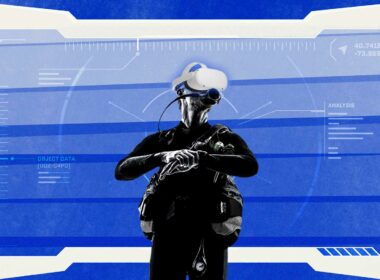Ben Horowitz of Andreessen Horowitz’s first rule of organisational design is that “all organisational designs are bad.”
By default, implementing a staffing structure within your startup means you can’t maintain the same level of communication between every person and every department. Hierarchy is the opposite of equality (actually, it’s the opposite of heterarchy, but you know what we mean).
When a startup shifts from that hands-on, mucking in, everyone doing everything stage to allocating static roles, some connections will prosper, and some will suffer. It’s often about choosing the lesser evil.
So how do you stand a chance at making your organisational design not bad?
Start with an org chart.
Org charts save you from octopus-like management responsibilities, or if you prefer food themed over animal themed analogies, having too many fingers in too many pies.
They allow you to do what you do best (generalise), while others specialise.
When the workload gets too much for your founding team, installing a sensible org chart from the beginning means not every decision, great and small, has to be made by you.
It will empower staff and teams, expedite processes, and save you from people and talent related crises.
But B2B SaaS is still new in the grand scheme of things, and there isn’t much of a playbook for hiring (or hierarch-ing) team members.
From 0 – 20
At seed stage, when you’re raising your first major funding round, a large portion will likely go to expanding your team from its small cluster of OG members.
This is where “all in it together” mentalities can start to shift and make way for a more hierarchical structure.
Here’s what not to base your hiring decisions on at this stage:
Budget. Costs always factor in. But trying to save on recruitment fees or salary expenses becomes a false economy when you start to near the 20 full-time employee (FTE) mark. Your time as a founder/driver of growth becomes too valuable to spend managing schedules or hosting stand ups instead of hiring department head(s), a General Manager, or a Managing Director to do it for you.
The same goes for the level and pay grade of your hires. Hiring juniors and interns makes sense under budget constraints. “Pay peanuts, get a monkey” is probably a little harsh here. But one strong, midweight developer can deliver double the ROI of two junior ones.
Who’s been there the longest. You may feel a sense of loyalty to those die-hard first hires. They were there in the trenches, man. In return for the risk of working with fledgling startups, they will likely expect promotion, priority, and progression.
If instead they have to be managed by a newcomer, things can get uncomfortable at best and hostile at worst. But your choice must be based on management skill and leadership quality, not longevity or loyalty.
Cultural fit. Startups often have strong social cultures and hiring to maintain those cultures can seem like the right thing. But there are problematic implications of hiring based on perceived cultural fit, to the point where progressive brands like Spotify and Buffer now have hiring guidelines and inclusive training programs specifically banning this kind of terminology.
Not only does “they will/won’t fit in” sound like “we only want people who look/speak/behave like us”, it can also cripple your diversity, and your exposure to new perspectives along with it.
From 20 – 50
When is a startup no longer a startup? That’s a bigger question for another article, but hitting 50 FTEs is one marker.
If you haven’t implemented it already, HR becomes crucial at this stage. Not just to manage your people-related stuff, but to deliver ROI through recruitment and retention. Both of these things should be continually active, not reactive to staff departures or once-a-year initiatives.
Your financial lead(s) may also need to become a bigger team to manage more complex customer structures, pricing strategies, salaries, and departmental budgets.
Senior technical salaries are astronomical at the moment. Senior technical people are very aware of this. Don’t piss off the perfect person by haggling over $5-10k.
One technical person you’ll need as you surpass 50 FTEs is something like a Director of Implementation. This is the person who oversees all of your software, keeping your various programs cohesive and interconnected (keeping costs and data sprawl down), and preventing processes from becoming islands.
From 50 – 100+
Now you’re so far into big picture territory, thinking gets a lot more philosophical.
Going back to the first benefit of org charts: they free you from having to make every big and small decision yourself.
Think of your scaling org chart not as a grid, a taxonomy, or a series of siloes. It should instead represent a flow of decision making, starting at the bottom.
Think of the smallest, lowest-priority, lowest implication on ROI decisions that could be made in your startup. Then think of who should oversee them. Then think of who should start to step in as those decisions get bigger and higher risk.
At this point, especially if you’ve grown suddenly without establishing a chart initially, you might need external assistance. Does building 100+ employees into an SaaS org chart seem overwhelming? There’s SaaS for that.
As promised by its very slick tagline, ChartHop makes people “the central nervous system of your organisation”, providing a centralised platform for org chart compilation.
The Org provides a network of public org charts startups can emulate (and provides add-on recruitment functionalities if you need help with that too).
This is one thing it’s okay to copy. Here’s Notion’s org chart, and below are three standard organisational charts based on 50+, 125+ and 400+ FTEs.
You don’t have to replicate these rigidly or commit to one static chart for life. The most important thing is, if you haven’t started yours, start now.
Series A – 50 Employees
- CEO (50)
- CTO (12)
- Front End (4)
- Back End (2)
- Client Applications (2)
- Core Services/Platform (1)
- Analytics (1)
- Development Operations/Infrastructure (1)
- Product Director (5)
- Product Manager (1-2)
- Design (2)
- Vice President, Sales (12)
- Enterprise AE (2)
- Mid-Market AE (2)
- SMB AE (2)
- Sales Operations (1)
- Director of Customer Success Management (9)
- CSM Enterprise (2)
- CSM Mid-Market (2)
- Implementation/Solutions or Sales Engineer (1-2)
- Support Representative (1)
- Director of Marketing (6)
- Demand Gen (1-2)
- Product Marketing (1)
- Sales Enablement Marketing (1)
- Events/Community (1)
- Director of Finance (6)
- FP&A Analysis (1)
- Accountant (1)
- Human Resources (1)
- Operations (1)
- Recruiter (1-2)
- CTO (12)
Series B – 125 Employees
- CEO (125)
- CTO (40)
- Vice President, Engineering (28)
- Director of Web (15)
- Front End (8)
- Back End (6)
- Director of Client Applications (6)
- Devs (5)
- Director of Core Services/Platform (4)
- Devs (3)
- QA (2)
- Director of Web (15)
- Director of Infrastructure (3)
- Devs (2)
- Director of Security (2)
- Devs (1)
- Director of Analytics (4)
- Analysts (3)
- IT (2)
- Vice President, Engineering (28)
- Vice President, Product (11)
- PM (5)
- Design (5)
- CRO (45)
- Director or Vice President, Sales (15)
- Enterprise AE (5)
- SMB AE (4)
- Mid-Market AE (4)
- Renewals Specialist (1)
- Director of Sales Development (6)
- SDR (5)
- Director of Sales Operations (3)
- Sales Ops (2)
- Director or Vice President, Business Development/Partnerships (1)
- Vice President, Customer Service Management (19)
- CSM Enterprise (6)
- CSM SMB & Mid-Market (5)
- Director of Implementation/Solutions (3)
- Solutions or Sales Engineers (2)
- Director of Customer Support (4)
- Customer Support Representatives (3)
- Director or Vice President, Sales (15)
- CMO (15)
- Director of Product Marketing (4)
- PMMs (3)
- Director of Demand Gen (4)
- Marketers (3)
- Director of Sales Enablement (3)
- Marketers (2)
- Director of Brand Marketing (3)
- PR & Analyst Relations (1-2)
- Events/Community (1)
- Director of Product Marketing (4)
- CFO (13)
- FP&A Director (1)
- FP&A Analyst (1)
- Controller (1)
- Accountants (1-2)
- Director of Recruiting (4)
- Recruiters (3)
- Human Resources (2)
- Operations (2)
- CTO (40)
Series C – 400 Employees
- CEO (400)
- CTO (114)
- VP, Engineering (92)
- Director of Web Development: Front End (30)
- Managers (2-3)
- Devs (26)
- Director of Web Development: Back End (18)
- Managers (1-2)
- Devs (16)
- Director of Client Applications (14)
- Devs (13)
- Director of Core Services (14)
- Devs (13)
- Director of Acquihire Project (9)
- Devs (8)
- Director of Quality Assurance (6)
- Devs (5)
- Director of Web Development: Front End (30)
- Director of Infrastructure (6)
- Devs (5)
- Director of Security (3)
- Devs (2)
- Vice President, Analytics (7)
- Analysts (4)
- Data Services Devs (2)
- Vice President, IT (5)
- IT support (4)
- VP, Engineering (92)
- CPO (23)
- Director of Product (10
- PMs (9)
- Director of Design (12)
- Designers (8)
- User Research (2)
- Copywriter (1)
- Director of Product (10
- CRO (185)
- Vice President or Senior Vice President, US Sales (73)
- Director or Vice President, Enterprise Sales (10)
- AEs (9)
- Director or Vice President, Mid-Market Sales (10)
- AEs (9)
- Director or Vice President, SMB Sales (16)
- AEs (15)
- Vice President, Sales Ops (6)
- Ops (5)
- Training (5)
- Director or Vice President, Enterprise Sales (10)
- Vice President, Customer Service Management (52)
- Director of Enterprise CSM (17)
- CSMs (16)
- Director of Mid-Market CSM (7)
- CSMs (6)
- Director of Implementation/Solutions Engineering (12)
- Solutions or Sales Engineers (11)
- Director of Customer Support (11)
- Customer Support Reps (10)
- Renewals Coordinator (1)
- Training (3)
- Director of Enterprise CSM (17)
- General Manager, Europe (60)
- Director of Enterprise Sales (10)
- AEs (9)
- Director of SMB and Mid-Market Sales (10)
- AEs (9)
- Manager of Sales Development (9)
- Sales Development Reps (8)
- Director of Customer Success (17)
- CSMs (16)
- Sales or Solutions Engineers (5)
- Recruiting (3)
- Ops (5)
- Director of Enterprise Sales (10)
- Vice President of Business Development (3)
- Partner Managers (2)
- Vice President or Senior Vice President, US Sales (73)
- CMO (33)
- Director or Vice Presidents of Product Marketing (7)
- PMMs (6)
- Director or Vice President, Demand Gen (6)
- Ad Manager (1-2)
- Brand Marketer (3)
- Director or Vice President, Sales Enablement (5)
- Solutions Marketer (3)
- Competitive Intel (1)
- Director or Vice President, Corporate Marketing (14)
- Public Relations (2-3)
- Analyst Relations (1-2)
- Events (3)
- Community (2)
- Creative (5)
- Director or Vice Presidents of Product Marketing (7)
- CFO (39)
- Controller (6)
- Accountants (5)
- Vice President of Recruiting (17)
- Recruiters (16)
- Vice President of People (4)
- Human Resource Reps (3)
- Vice President of FP&A (3)
- Analysts (2)
- Ops (8)
- Controller (6)
- General Counsel (1)
- CTO (114)











